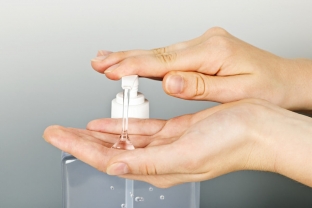Every day more and more invasive procedures are performed in cosmetology clinics and salons, the range of operations in plastic surgery is expanding. The first place in such operations is the issue of patient safety, which cannot be discussed without careful observance of asepsis and antiseptics, i.e. measures aimed at preventing the penetration of infectious agents into the body and their destruction in the body through various methods of exposure and substances. About the principles of competent disinfection in cosmetology estet-portal.com will tell in this article.
Asepsis and antisepsis in medicine: history of development
Thanks to the introduction of aseptic and antiseptic measures at the end of the XIX – At the beginning of the 20th century, the possibilities of surgeons expanded significantly.
Doctors thought about disinfection 500 years before our era. True, at that time it consisted solely in cleaning wounds from foreign bodies in order to accelerate wound healing.
During the empirical period of asepsis and antisepsis, Hippocrates used only boiled water during operations.
Disinfection in medicine has evolved from simple wound cleaning to a complex of antiseptic and aseptic measures.
During the period of Dolisterian antiseptics, the Hungarian obstetrician Ignaz Semmelweis proposed the use of bleach for hand treatment. Nikolai Ivanovich Pirogov used the following agents as antiseptics:
- silver nitrate;
- chlorine bleach;
- wine spirit;
- zinc sulfate;
- camphor alcohol.
Also, Pirogov, in order to prevent surgical infections, demanded the separation of patients into infectious and non-infectious, as well as their placement in different departments.
Louis Pasteur in 1878 announced the danger of infection of patients due to microbes entering the wound from the hands and instruments of the surgeon, after which, already in the 60s of the XIX century, J. Lister used carbolic acid as an antiseptic for open fractures.
After 25 years, asepsis has proven itself so well that it was even proposed to abandon antiseptics in surgical practice. But it turned out to be impossible.
Further discoveries in the field of chemistry have allowed the selection of new antiseptic agents that are less toxic to patients than carbolic acid. Similar tools began to be used to process surgical instruments and other items. Thus, over time, asepsis was closely intertwined with antisepsis.

What products are used for disinfection in cosmetology?
The relevance of disinfection in cosmetology today has increased significantly due to the emergence of various minimally invasive manipulations aimed at rejuvenating and improving the condition of the patient's skin. Properly selected antiseptics can not only prevent secondary infection, but also speed up skin recovery.
Such agents include povidone-iodine (trade name – Betadine), which has been used in medicine since the end of the 20th century and has antiseptic and disinfectant properties. The antimicrobial action of povidone-iodine is based on damage to the cell wall of pathogens by iodine.
Betadine antimicrobial spectrum:
- gram-negative microorganisms;
- gram-positive microorganisms;
- fungi and spore-forming flora;
- protozoa;
- treponemes;
- some viruses.
The advantage of this drug is the absence of formation of resistance of microorganisms even with prolonged use.
Features of using Betadine for disinfection in cosmetology
Patients with diabetes are prone to pyoderma, trophic ulcers in the development of diabetic foot. Prevention and treatment of this pathology can avoid limb amputation in such patients. Betadine is also effective in pathology complicated by the addition of a secondary infection or trophic disorders and in the prevention of infection.
Betadine solution is used both in concentrated and diluted form.
In case of acne or pustular diseases, it is recommended to wipe the skin with a swab dipped in a concentrated or 5% (1:2) solution.
Infectious complications in cosmetology have become more frequent as a result of the use of thread technologies and cannulas for contouring. The cause of such complications is the result of the penetration of bacteria from the surface of the skin into the dermis and subcutaneous fat. Therefore, it is very, very important to follow the rules of disinfection in cosmetology. In this case, concentrated Betadine is used on healthy areas of the skin, exposure time – 1–2 min
When correcting involutional changes in the anogenital area, Betadine is used at concentrations recommended for "small" gynecological operations.
1% (1:10) solution of Betadine is used in the complex therapy of bacterial or fungal dermatitis.
For local treatment or after viral infections, the skin is treated with a concentrated solution of Betadine.
Thus, Betadine solution is a reliable antiseptic, and its effectiveness has been confirmed by a number of studies. The possibility of using a concentrated and diluted solution for disinfection in cosmetology is also a big plus, which supports the relevance of the use of Betadine by cosmetologists.







Add a comment